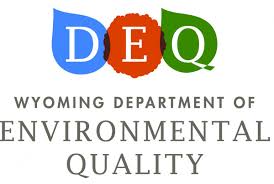News
Harmful Cyanobacterial Bloom Advisory Issued for Lake DeSmet

A health advisory has been issued by the state concerning harmful cyanobacterial bloom (HCB) found in Lake DeSmet in Johnson County.
According to a release,the Wyoming Department of Health (WDH) has issued a harmful cyanobacterial bloom (HCB) recreational use Bloom Advisory for Lake DeSmet based on data provided by the Wyoming Department of Environmental Quality (DEQ).
The WDH is working directly with resource management agencies to ensure that signs are posted at all bodies of water with advisories.
Additional details regarding advisory status, including changes to the type of advisory, and other HCB resources can be found at WyoHCBs.org.
The WDH issues recreational use advisories when cyanobacterial cell densities or cyanotoxin concentrations pose a risk to people engaging in swimming or similar water contact activities in areas where cyanobacterial blooms occur.
HCBs may also pose a health risk to animals.
Bloom Advisories are issued when a HCB is present and toxins may be present. Toxin Advisories are issued when cyanotoxins exceed recreational thresholds.
Water bodies under an advisory are not closed since HCBs may only be present in certain areas and conditions can change frequently. Advisories will remain in place until blooms have fully dissipated and cyanotoxin concentrations are below recreational use thresholds identified in Wyoming’s HCB Action Plan.
A list of actions to take if you come in contact with a potential HCB is listed below.
Questions about health effects and recreational use advisories can be directed to Courtney Tillman, Surveillance Epidemiologist with the Wyoming Department of Health.
Contact Courtney Tillman at courtney.tillman@wyo.gov or (307) 777-5522.
Questions regarding cyanobacteria sampling can be directed to Kelsee Hurshman, Natural Resource Analyst, Wyoming Department of Environmental Quality, at kelsee.hurshman1@wyo.gov or (307) 777-2073.
If you encounter a potential HCB, the Wyoming Department of Health and the Wyoming Livestock Board recommend the following:
- Avoid contact with water in the vicinity of the bloom, especially in areas where cyanobacteria are dense and form scums.
- Do not ingest water from the bloom. Boiling, filtration and/or other treatments will not remove toxins.
- Rinse fish with clean water and eat only the fillet portion.
- Avoid water spray from the bloom.
- Do not allow pets or livestock to drink water near the bloom, eat bloom material, or lick fur after contact.
- If people, pets, or livestock come into contact with a bloom, rinse off with clean water as soon as possible and contact a doctor or veterinarian.

